1 of 12
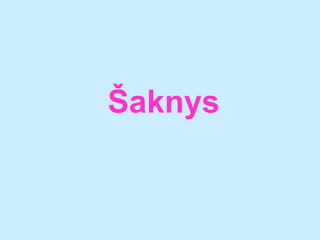
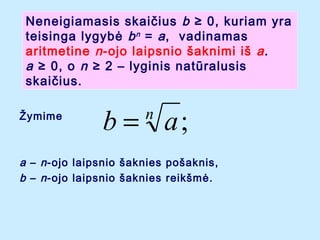
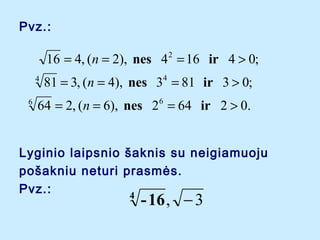
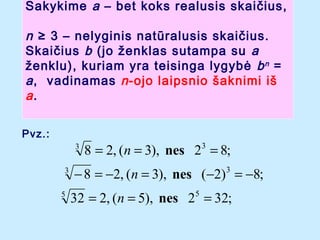
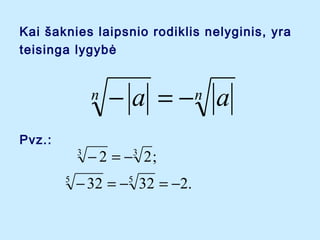
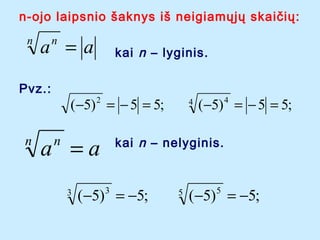
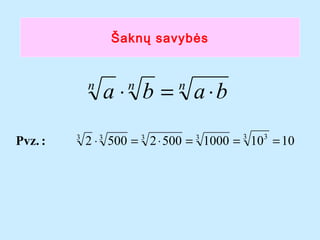
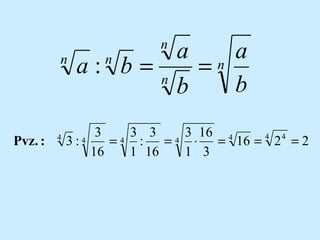
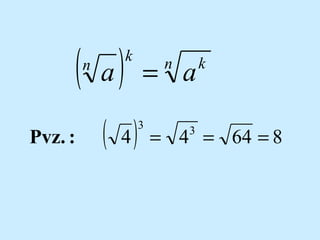



Ad
Recommended
????? ????????
????? ???????????? ????????? (98-?????? ?????) https://nitamaisuradze.blogspot.com/
?
"???? ?????????????" (??????? ???????)LlorarasMarcos Burbano
?
Le document semble contenir des informations sur une transcription musicale, probablement d'une ?uvre musicale, comprenant divers ©”l©”ments tels que des indications de tonalit©” et des structures musicales. Les mentions de trombones et les noms de morceaux sugg©©rent qu'il est destin©” ©ż des musiciens ou ©ż des performances. Toutefois, le texte est en grande partie illisible ou corrompu, rendant difficile une compr©”hension pr©”cise de son contenu.????????????? ?????????
????????????? ????????????? ????????? (98-?????? ?????) https://nitamaisuradze.blogspot.com/
?
?????????????????????????????? ĪĒ 13
????????? ĪĒ 13datiko43
?
http://qimia.blogspot.com
?????? ????????: ????? ?????, ?????? ????????, ???? ???????????.¦▒?¦š¦Ō¦Õ¦ķ¦▀¦┌¦▄ ¦ż¦ų¦Ó¦▐¦ų¦õ¦Ō?¦± 9 ¦▄¦▌¦č¦Ń (¦▒¦Ó¦į¦▌.) ¦«¦ų¦Ō¦┘¦▌¦±¦▄ ¦Ī.¦ż.
¦▒?¦š¦Ō¦Õ¦ķ¦▀¦┌¦▄ ¦ż¦ų¦Ó¦▐¦ų¦õ¦Ō?¦± 9 ¦▄¦▌¦č¦Ń (¦▒¦Ó¦į¦▌.) ¦«¦ų¦Ō¦┘¦▌¦±¦▄ ¦Ī.¦ż.oleg379
?
¦▒?¦š¦Ō¦Õ¦ķ¦▀¦┌¦▄ ¦ż¦ų¦Ó¦▐¦ų¦õ¦Ō?¦± 9 ¦▄¦▌¦č¦Ń (¦▒¦Ó¦į¦▌.)
¦«¦ų¦Ō¦┘¦▌¦±¦▄ ¦Ī.¦ż., ¦▒¦Ó¦▌¦Ó¦▀¦Ń¦Ņ¦▄¦┌¦█ ¦Ż.¦ó., ¦┴¦▄?¦Ō ¦«.¦│.
¦Ę¦č¦Ō¦▄?¦ė, "¦ż?¦▐¦▀¦č¦┘?¦±" 2009 - 270 ¦Ń.¦¼¦Ó¦▀¦Ń¦õ¦Ō¦Õ¦┌¦Ō¦č¦▀¦ų ¦▀¦č ¦Ō¦č¦┘¦▄¦▌¦Ó¦▀¦ų¦▀¦┌ ¦č¦▌¦į¦Ó¦Ō¦┌¦õ¦▐¦┌
¦¼¦Ó¦▀¦Ń¦õ¦Ō¦Õ¦┌¦Ō¦č¦▀¦ų ¦▀¦č ¦Ō¦č¦┘¦▄¦▌¦Ó¦▀¦ų¦▀¦┌ ¦č¦▌¦į¦Ó¦Ō¦┌¦õ¦▐¦┌Krassimir Kosstov
?
¦ź¦ų¦▐¦Ó¦Ń¦õ¦Ō¦č¦Ķ¦┌¦± ¦ķ¦Ō¦ų¦┘ ¦┌¦į¦Ō¦č "¦ż¦▌¦č¦š¦▀¦č ¦▄¦Ó¦õ¦▄¦č". ¦Ó¦ęĪ»?¦▐ ¦▐¦▀¦Ó¦į¦Ó¦į¦Ō¦č¦▀¦▀¦┌¦▄?¦ė (¦▀¦č¦ė¦ķ¦č¦▌¦Ņ¦▀¦č ¦ß¦Ō¦ų¦┘¦ų¦▀¦õ¦č¦Ķ?¦± ¦õ¦č ¦┘¦č¦ė¦š¦č¦▀¦▀¦±)
¦Ó¦ęĪ»?¦▐ ¦▐¦▀¦Ó¦į¦Ó¦į¦Ō¦č¦▀¦▀¦┌¦▄?¦ė (¦▀¦č¦ė¦ķ¦č¦▌¦Ņ¦▀¦č ¦ß¦Ō¦ų¦┘¦ų¦▀¦õ¦č¦Ķ?¦± ¦õ¦č ¦┘¦č¦ė¦š¦č¦▀¦▀¦±)¦Ł¦¦š¦▐¦┌¦▌¦č ¦╗¦ų¦Ķ¦Ó¦ė¦č
?
3 ¦▐¦č¦Ō¦õ - ¦┌¦┘¦į¦Ó¦õ¦ė¦┌¦▌: ¦ź¦Ó¦▀¦┌¦▄¦č 7 ¦▄¦▌¦č¦Ń
3 ¦▐¦č¦Ō¦õ - ¦┌¦┘¦į¦Ó¦õ¦ė¦┌¦▌: ¦ź¦Ó¦▀¦┌¦▄¦č 7 ¦▄¦▌¦č¦Ńmilena_stefanova
?
¦ß¦Ō¦ų¦┘¦ų¦▀¦õ¦č¦Ķ¦┌¦± ¦┘¦č 3 ¦▐¦č¦Ō¦õ¦ż¦ų¦Ó¦▐¦ų¦õ¦Ō¦┌¦ķ¦▀? ¦ß¦ų¦Ō¦ų¦õ¦ė¦Ó¦Ō¦ų¦▀¦▀¦± ¦į¦Ō¦č¦µ?¦▄?¦ė ¦õ¦Ō¦┌¦į¦Ó¦▀¦Ó¦▐¦ų¦õ¦Ō¦┌¦ķ¦▀¦┌¦ń ¦µ¦Õ¦▀¦▄¦Ķ?¦█
¦ż¦ų¦Ó¦▐¦ų¦õ¦Ō¦┌¦ķ¦▀? ¦ß¦ų¦Ō¦ų¦õ¦ė¦Ó¦Ō¦ų¦▀¦▀¦± ¦į¦Ō¦č¦µ?¦▄?¦ė ¦õ¦Ō¦┌¦į¦Ó¦▀¦Ó¦▐¦ų¦õ¦Ō¦┌¦ķ¦▀¦┌¦ń ¦µ¦Õ¦▀¦▄¦Ķ?¦█lulettta
?
¦ź¦Ó¦▄¦Õ¦▐¦ų¦▀¦õ ¦Ń¦Ó¦š¦ų¦Ō¦ž¦┌¦õ ¦┘¦č¦š¦č¦ķ¦Õ ¦ß¦Ó ¦ß¦Ó¦Ń¦õ¦Ō¦Ó¦ų¦▀¦┌¦ ¦į¦Ō¦č¦µ¦┌¦▄¦Ó¦ė ¦õ¦Ō¦┌¦į¦Ó¦▀¦Ó¦▐¦ų¦õ¦Ō¦┌¦ķ¦ų¦Ń¦▄¦┌¦ń ¦µ¦Õ¦▀¦▄¦Ķ¦┌¦█ ¦┌ ¦┌¦ń ¦č¦▀¦č¦▌¦┌¦┘¦Õ. ¦Ż ¦▀¦ų¦▐ ¦ß¦Ō¦┌¦ė¦Ó¦š¦±¦õ¦Ń¦± ¦ß¦Ō¦┌¦▐¦ų¦Ō¦Ē ¦µ¦Õ¦▀¦▄¦Ķ¦┌¦█, ¦▄¦Ó¦õ¦Ó¦Ō¦Ē¦ų ¦▀¦ų¦Ó¦ę¦ń¦Ó¦š¦┌¦▐¦Ó ¦ė¦┌¦┘¦Õ¦č¦▌¦┌¦┘¦┌¦Ō¦Ó¦ė¦č¦õ¦Ņ ¦┌ ¦Ó¦ß¦┌¦Ń¦č¦õ¦Ņ ¦Ń ¦ß¦Ó¦▐¦Ó¦ļ¦Ņ¦ ¦č¦▀¦č¦▌¦┌¦õ¦┌¦ķ¦ų¦Ń¦▄¦┌¦ń ¦┘¦č¦ß¦┌¦Ń¦ų¦█. ¦┤¦č¦▄¦ž¦ų ¦ė¦▄¦▌¦¦ķ¦ų¦▀¦Ē ¦õ¦ų¦Ń¦õ¦Ē ¦š¦▌¦± ¦Ó¦ß¦Ō¦ų¦š¦ų¦▌¦ų¦▀¦┌¦± ¦Ń¦Ó¦Ó¦õ¦ė¦ų¦õ¦Ń¦õ¦ė¦┌¦± ¦į¦Ō¦č¦µ¦┌¦▄¦Ó¦ė ¦Ó¦ß¦┌¦Ń¦č¦▀¦▀¦Ē¦▐ ¦µ¦Õ¦▀¦▄¦Ķ¦┌¦±¦▐.¦¼¦ė¦č¦š¦Ō¦č¦õ¦õ¦Ē? ¦µ¦Õ¦▀¦▄¦Ķ¦┌¦± ¦ž?¦▀¦ų ¦Ó¦▀¦Ē? ¦į¦Ō¦č¦µ¦┌¦į?
¦¼¦ė¦č¦š¦Ō¦č¦õ¦õ¦Ē? ¦µ¦Õ¦▀¦▄¦Ķ¦┌¦± ¦ž?¦▀¦ų ¦Ó¦▀¦Ē? ¦į¦Ō¦č¦µ¦┌¦į? ¦Ī¦█¦ę¦ų¦▄ ?¦Õ¦č¦▀¦š¦Ē??¦▌¦Ē
?
¦▓¦č¦Ķ¦┌¦Ó¦▀¦č¦▌ ?¦Ō¦▀¦ų¦▄¦õ¦ų¦Ō¦š? ¦õ¦ų¦ß¦ų- ¦õ¦ų? ¦õ?¦Ō¦▌¦ų¦▀¦š?¦Ō¦Õ¦│¦¬¦▓¦»¦¬ ¦®¦Ī¦ż¦░¦Ż¦”¦®¦»¦¬ - ¦▒¦▓¦░¦║¦¼¦Ī
¦│¦¬¦▓¦»¦¬ ¦®¦Ī¦ż¦░¦Ż¦”¦®¦»¦¬ - ¦▒¦▓¦░¦║¦¼¦Ī¦«¦č¦Ō¦┌¦± Maria Georgieva TeacherBG
?
¦Ī¦ė¦õ¦Ó¦Ō:¦ź.¦ż¦č¦▀¦ķ¦ų¦ė¦č¦®¦ė¦Õ¦▄ ¦┌ ¦ę¦Õ¦▄¦ė¦č ¦«¦▐
¦®¦ė¦Õ¦▄ ¦┌ ¦ę¦Õ¦▄¦ė¦č ¦«¦▐ Sevda Rabineva
?
¦ó¦Õ¦▄¦ė¦č¦Ō, 1 ¦▄¦▌¦č¦Ń, ¦®¦ė¦Õ¦▄ ¦┌ ¦ę¦Õ¦▄¦ė¦č ¦«¦▐ - ¦Ō¦č¦ę¦Ó¦õ¦▀¦Ó ¦▌¦┌¦Ń¦õ¦ķ¦ų¦ß¦Ō¦ų¦┘¦ų¦▀¦õ¦č¦Ķ?¦± ¦Õ¦Ō¦Ó¦▄¦Õ 8 ¦▄¦▌¦č¦Ń ¦õ¦ų¦ń¦▀¦Ó¦▌¦Ó¦į?¦± ¦▄¦Ō¦┌¦õ¦┌¦ķ¦▀¦Ó¦į¦Ó ¦▐¦┌¦Ń¦▌¦ų¦▀¦▀¦±
¦ß¦Ō¦ų¦┘¦ų¦▀¦õ¦č¦Ķ?¦± ¦Õ¦Ō¦Ó¦▄¦Õ 8 ¦▄¦▌¦č¦Ń ¦õ¦ų¦ń¦▀¦Ó¦▌¦Ó¦į?¦± ¦▄¦Ō¦┌¦õ¦┌¦ķ¦▀¦Ó¦į¦Ó ¦▐¦┌¦Ń¦▌¦ų¦▀¦▀¦±anna1691
?
¦┤¦Ó¦õ¦Ó¦ž¦▀? ¦ß¦ų¦Ō¦ų¦õ¦ė¦Ó¦Ō¦ų¦▀¦▀¦± ¦Ō¦č¦Ķ?¦Ó¦▀¦č¦▌¦Ņ¦▀¦┌¦ń ¦ė¦┌¦Ō¦č¦┘?¦ė, ¦č¦▌¦į¦ų¦ę¦Ō¦č 8 ¦▄¦▌¦č¦Ń, ¦õ¦ų¦ń¦▀¦Ó¦▌¦Ó¦į?¦± ¦▄¦Ō¦┌¦õ¦┌¦ķ¦▀¦Ó¦į¦Ó ¦▐¦┌¦Ń¦▌¦ų¦▀¦▀¦±¦Ń¦ņ¦ę¦┌¦Ō¦č¦▀¦ų ¦┌ ¦┌¦┘¦ė¦č¦ž¦š¦č¦▀¦ų ¦š¦Ó 10 .¦┘¦č¦š¦č¦ķ¦┌ ¦┘¦č ¦Õ¦ķ¦ų¦▀¦┌¦Ķ¦┌ ¦Ń¦ņ¦Ń ¦Ń¦ß¦ų¦Ķ¦┌¦č¦▌¦▀¦┌ ¦ß¦Ó¦õ¦Ō¦ų¦ę¦▀¦Ó¦Ń¦õ¦┌
¦Ń¦ņ¦ę¦┌¦Ō¦č¦▀¦ų ¦┌ ¦┌¦┘¦ė¦č¦ž¦š¦č¦▀¦ų ¦š¦Ó 10 .¦┘¦č¦š¦č¦ķ¦┌ ¦┘¦č ¦Õ¦ķ¦ų¦▀¦┌¦Ķ¦┌ ¦Ń¦ņ¦Ń ¦Ń¦ß¦ų¦Ķ¦┌¦č¦▌¦▀¦┌ ¦ß¦Ó¦õ¦Ō¦ų¦ę¦▀¦Ó¦Ń¦õ¦┌¦▒¦č¦ė¦▌¦┌¦▀¦č ¦¬¦ė¦č¦▀¦Ó¦ė¦č
?
¦│¦ņ¦ę¦┌¦Ō¦č¦▀¦ų ¦┌ ¦┌¦┘¦ė¦č¦ž¦š¦č¦▀¦ų ¦š¦Ó 10 .¦▒¦ņ¦Ō¦ė¦┌ ¦Ń¦õ¦ņ¦ß¦▄¦┌ ¦ė ¦Ń¦▐¦±¦õ¦č¦▀¦ų¦õ¦ÓŠ║źūźĒżŽ╚╦╔·ż╬ę█ż╦┴óż─ŻĪ
Š║źūźĒżŽ╚╦╔·ż╬ę█ż╦┴óż─ŻĪKensuke Otsuki
?
2023 ─ĻČ╚╚š▒ŠŪķł¾ź¬źĻź¾źįź├ź» (JOI) ▒Š▀xż╬ķ_─╗ź¬źĻź©ź¾źŲ®`źĘźńź¾ż╦ż¬ż▒żļųvč▌┘Y┴ŽżŪż╣ĪŻ
https://www.ioi-jp.org/joi/2022/2023-ho-outline.htmlAMOR A MEDIO TIEMPO(BOBBY VALENTIN)
AMOR A MEDIO TIEMPO(BOBBY VALENTIN)Marcos Burbano
?
AMOR A MEDIO TIEMPO(BOBBY VALENTIN)
PARTITURA BAJO
Transcripcion? Marcos Burbano
www.salsapartituras.comMore Related Content
What's hot (20)
????????? ĪĒ 13
????????? ĪĒ 13datiko43
?
http://qimia.blogspot.com
?????? ????????: ????? ?????, ?????? ????????, ???? ???????????.¦▒?¦š¦Ō¦Õ¦ķ¦▀¦┌¦▄ ¦ż¦ų¦Ó¦▐¦ų¦õ¦Ō?¦± 9 ¦▄¦▌¦č¦Ń (¦▒¦Ó¦į¦▌.) ¦«¦ų¦Ō¦┘¦▌¦±¦▄ ¦Ī.¦ż.
¦▒?¦š¦Ō¦Õ¦ķ¦▀¦┌¦▄ ¦ż¦ų¦Ó¦▐¦ų¦õ¦Ō?¦± 9 ¦▄¦▌¦č¦Ń (¦▒¦Ó¦į¦▌.) ¦«¦ų¦Ō¦┘¦▌¦±¦▄ ¦Ī.¦ż.oleg379
?
¦▒?¦š¦Ō¦Õ¦ķ¦▀¦┌¦▄ ¦ż¦ų¦Ó¦▐¦ų¦õ¦Ō?¦± 9 ¦▄¦▌¦č¦Ń (¦▒¦Ó¦į¦▌.)
¦«¦ų¦Ō¦┘¦▌¦±¦▄ ¦Ī.¦ż., ¦▒¦Ó¦▌¦Ó¦▀¦Ń¦Ņ¦▄¦┌¦█ ¦Ż.¦ó., ¦┴¦▄?¦Ō ¦«.¦│.
¦Ę¦č¦Ō¦▄?¦ė, "¦ż?¦▐¦▀¦č¦┘?¦±" 2009 - 270 ¦Ń.¦¼¦Ó¦▀¦Ń¦õ¦Ō¦Õ¦┌¦Ō¦č¦▀¦ų ¦▀¦č ¦Ō¦č¦┘¦▄¦▌¦Ó¦▀¦ų¦▀¦┌ ¦č¦▌¦į¦Ó¦Ō¦┌¦õ¦▐¦┌
¦¼¦Ó¦▀¦Ń¦õ¦Ō¦Õ¦┌¦Ō¦č¦▀¦ų ¦▀¦č ¦Ō¦č¦┘¦▄¦▌¦Ó¦▀¦ų¦▀¦┌ ¦č¦▌¦į¦Ó¦Ō¦┌¦õ¦▐¦┌Krassimir Kosstov
?
¦ź¦ų¦▐¦Ó¦Ń¦õ¦Ō¦č¦Ķ¦┌¦± ¦ķ¦Ō¦ų¦┘ ¦┌¦į¦Ō¦č "¦ż¦▌¦č¦š¦▀¦č ¦▄¦Ó¦õ¦▄¦č". ¦Ó¦ęĪ»?¦▐ ¦▐¦▀¦Ó¦į¦Ó¦į¦Ō¦č¦▀¦▀¦┌¦▄?¦ė (¦▀¦č¦ė¦ķ¦č¦▌¦Ņ¦▀¦č ¦ß¦Ō¦ų¦┘¦ų¦▀¦õ¦č¦Ķ?¦± ¦õ¦č ¦┘¦č¦ė¦š¦č¦▀¦▀¦±)
¦Ó¦ęĪ»?¦▐ ¦▐¦▀¦Ó¦į¦Ó¦į¦Ō¦č¦▀¦▀¦┌¦▄?¦ė (¦▀¦č¦ė¦ķ¦č¦▌¦Ņ¦▀¦č ¦ß¦Ō¦ų¦┘¦ų¦▀¦õ¦č¦Ķ?¦± ¦õ¦č ¦┘¦č¦ė¦š¦č¦▀¦▀¦±)¦Ł¦¦š¦▐¦┌¦▌¦č ¦╗¦ų¦Ķ¦Ó¦ė¦č
?
3 ¦▐¦č¦Ō¦õ - ¦┌¦┘¦į¦Ó¦õ¦ė¦┌¦▌: ¦ź¦Ó¦▀¦┌¦▄¦č 7 ¦▄¦▌¦č¦Ń
3 ¦▐¦č¦Ō¦õ - ¦┌¦┘¦į¦Ó¦õ¦ė¦┌¦▌: ¦ź¦Ó¦▀¦┌¦▄¦č 7 ¦▄¦▌¦č¦Ńmilena_stefanova
?
¦ß¦Ō¦ų¦┘¦ų¦▀¦õ¦č¦Ķ¦┌¦± ¦┘¦č 3 ¦▐¦č¦Ō¦õ¦ż¦ų¦Ó¦▐¦ų¦õ¦Ō¦┌¦ķ¦▀? ¦ß¦ų¦Ō¦ų¦õ¦ė¦Ó¦Ō¦ų¦▀¦▀¦± ¦į¦Ō¦č¦µ?¦▄?¦ė ¦õ¦Ō¦┌¦į¦Ó¦▀¦Ó¦▐¦ų¦õ¦Ō¦┌¦ķ¦▀¦┌¦ń ¦µ¦Õ¦▀¦▄¦Ķ?¦█
¦ż¦ų¦Ó¦▐¦ų¦õ¦Ō¦┌¦ķ¦▀? ¦ß¦ų¦Ō¦ų¦õ¦ė¦Ó¦Ō¦ų¦▀¦▀¦± ¦į¦Ō¦č¦µ?¦▄?¦ė ¦õ¦Ō¦┌¦į¦Ó¦▀¦Ó¦▐¦ų¦õ¦Ō¦┌¦ķ¦▀¦┌¦ń ¦µ¦Õ¦▀¦▄¦Ķ?¦█lulettta
?
¦ź¦Ó¦▄¦Õ¦▐¦ų¦▀¦õ ¦Ń¦Ó¦š¦ų¦Ō¦ž¦┌¦õ ¦┘¦č¦š¦č¦ķ¦Õ ¦ß¦Ó ¦ß¦Ó¦Ń¦õ¦Ō¦Ó¦ų¦▀¦┌¦ ¦į¦Ō¦č¦µ¦┌¦▄¦Ó¦ė ¦õ¦Ō¦┌¦į¦Ó¦▀¦Ó¦▐¦ų¦õ¦Ō¦┌¦ķ¦ų¦Ń¦▄¦┌¦ń ¦µ¦Õ¦▀¦▄¦Ķ¦┌¦█ ¦┌ ¦┌¦ń ¦č¦▀¦č¦▌¦┌¦┘¦Õ. ¦Ż ¦▀¦ų¦▐ ¦ß¦Ō¦┌¦ė¦Ó¦š¦±¦õ¦Ń¦± ¦ß¦Ō¦┌¦▐¦ų¦Ō¦Ē ¦µ¦Õ¦▀¦▄¦Ķ¦┌¦█, ¦▄¦Ó¦õ¦Ó¦Ō¦Ē¦ų ¦▀¦ų¦Ó¦ę¦ń¦Ó¦š¦┌¦▐¦Ó ¦ė¦┌¦┘¦Õ¦č¦▌¦┌¦┘¦┌¦Ō¦Ó¦ė¦č¦õ¦Ņ ¦┌ ¦Ó¦ß¦┌¦Ń¦č¦õ¦Ņ ¦Ń ¦ß¦Ó¦▐¦Ó¦ļ¦Ņ¦ ¦č¦▀¦č¦▌¦┌¦õ¦┌¦ķ¦ų¦Ń¦▄¦┌¦ń ¦┘¦č¦ß¦┌¦Ń¦ų¦█. ¦┤¦č¦▄¦ž¦ų ¦ė¦▄¦▌¦¦ķ¦ų¦▀¦Ē ¦õ¦ų¦Ń¦õ¦Ē ¦š¦▌¦± ¦Ó¦ß¦Ō¦ų¦š¦ų¦▌¦ų¦▀¦┌¦± ¦Ń¦Ó¦Ó¦õ¦ė¦ų¦õ¦Ń¦õ¦ė¦┌¦± ¦į¦Ō¦č¦µ¦┌¦▄¦Ó¦ė ¦Ó¦ß¦┌¦Ń¦č¦▀¦▀¦Ē¦▐ ¦µ¦Õ¦▀¦▄¦Ķ¦┌¦±¦▐.¦¼¦ė¦č¦š¦Ō¦č¦õ¦õ¦Ē? ¦µ¦Õ¦▀¦▄¦Ķ¦┌¦± ¦ž?¦▀¦ų ¦Ó¦▀¦Ē? ¦į¦Ō¦č¦µ¦┌¦į?
¦¼¦ė¦č¦š¦Ō¦č¦õ¦õ¦Ē? ¦µ¦Õ¦▀¦▄¦Ķ¦┌¦± ¦ž?¦▀¦ų ¦Ó¦▀¦Ē? ¦į¦Ō¦č¦µ¦┌¦į? ¦Ī¦█¦ę¦ų¦▄ ?¦Õ¦č¦▀¦š¦Ē??¦▌¦Ē
?
¦▓¦č¦Ķ¦┌¦Ó¦▀¦č¦▌ ?¦Ō¦▀¦ų¦▄¦õ¦ų¦Ō¦š? ¦õ¦ų¦ß¦ų- ¦õ¦ų? ¦õ?¦Ō¦▌¦ų¦▀¦š?¦Ō¦Õ¦│¦¬¦▓¦»¦¬ ¦®¦Ī¦ż¦░¦Ż¦”¦®¦»¦¬ - ¦▒¦▓¦░¦║¦¼¦Ī
¦│¦¬¦▓¦»¦¬ ¦®¦Ī¦ż¦░¦Ż¦”¦®¦»¦¬ - ¦▒¦▓¦░¦║¦¼¦Ī¦«¦č¦Ō¦┌¦± Maria Georgieva TeacherBG
?
¦Ī¦ė¦õ¦Ó¦Ō:¦ź.¦ż¦č¦▀¦ķ¦ų¦ė¦č¦®¦ė¦Õ¦▄ ¦┌ ¦ę¦Õ¦▄¦ė¦č ¦«¦▐
¦®¦ė¦Õ¦▄ ¦┌ ¦ę¦Õ¦▄¦ė¦č ¦«¦▐ Sevda Rabineva
?
¦ó¦Õ¦▄¦ė¦č¦Ō, 1 ¦▄¦▌¦č¦Ń, ¦®¦ė¦Õ¦▄ ¦┌ ¦ę¦Õ¦▄¦ė¦č ¦«¦▐ - ¦Ō¦č¦ę¦Ó¦õ¦▀¦Ó ¦▌¦┌¦Ń¦õ¦ķ¦ų¦ß¦Ō¦ų¦┘¦ų¦▀¦õ¦č¦Ķ?¦± ¦Õ¦Ō¦Ó¦▄¦Õ 8 ¦▄¦▌¦č¦Ń ¦õ¦ų¦ń¦▀¦Ó¦▌¦Ó¦į?¦± ¦▄¦Ō¦┌¦õ¦┌¦ķ¦▀¦Ó¦į¦Ó ¦▐¦┌¦Ń¦▌¦ų¦▀¦▀¦±
¦ß¦Ō¦ų¦┘¦ų¦▀¦õ¦č¦Ķ?¦± ¦Õ¦Ō¦Ó¦▄¦Õ 8 ¦▄¦▌¦č¦Ń ¦õ¦ų¦ń¦▀¦Ó¦▌¦Ó¦į?¦± ¦▄¦Ō¦┌¦õ¦┌¦ķ¦▀¦Ó¦į¦Ó ¦▐¦┌¦Ń¦▌¦ų¦▀¦▀¦±anna1691
?
¦┤¦Ó¦õ¦Ó¦ž¦▀? ¦ß¦ų¦Ō¦ų¦õ¦ė¦Ó¦Ō¦ų¦▀¦▀¦± ¦Ō¦č¦Ķ?¦Ó¦▀¦č¦▌¦Ņ¦▀¦┌¦ń ¦ė¦┌¦Ō¦č¦┘?¦ė, ¦č¦▌¦į¦ų¦ę¦Ō¦č 8 ¦▄¦▌¦č¦Ń, ¦õ¦ų¦ń¦▀¦Ó¦▌¦Ó¦į?¦± ¦▄¦Ō¦┌¦õ¦┌¦ķ¦▀¦Ó¦į¦Ó ¦▐¦┌¦Ń¦▌¦ų¦▀¦▀¦±¦Ń¦ņ¦ę¦┌¦Ō¦č¦▀¦ų ¦┌ ¦┌¦┘¦ė¦č¦ž¦š¦č¦▀¦ų ¦š¦Ó 10 .¦┘¦č¦š¦č¦ķ¦┌ ¦┘¦č ¦Õ¦ķ¦ų¦▀¦┌¦Ķ¦┌ ¦Ń¦ņ¦Ń ¦Ń¦ß¦ų¦Ķ¦┌¦č¦▌¦▀¦┌ ¦ß¦Ó¦õ¦Ō¦ų¦ę¦▀¦Ó¦Ń¦õ¦┌
¦Ń¦ņ¦ę¦┌¦Ō¦č¦▀¦ų ¦┌ ¦┌¦┘¦ė¦č¦ž¦š¦č¦▀¦ų ¦š¦Ó 10 .¦┘¦č¦š¦č¦ķ¦┌ ¦┘¦č ¦Õ¦ķ¦ų¦▀¦┌¦Ķ¦┌ ¦Ń¦ņ¦Ń ¦Ń¦ß¦ų¦Ķ¦┌¦č¦▌¦▀¦┌ ¦ß¦Ó¦õ¦Ō¦ų¦ę¦▀¦Ó¦Ń¦õ¦┌¦▒¦č¦ė¦▌¦┌¦▀¦č ¦¬¦ė¦č¦▀¦Ó¦ė¦č
?
¦│¦ņ¦ę¦┌¦Ō¦č¦▀¦ų ¦┌ ¦┌¦┘¦ė¦č¦ž¦š¦č¦▀¦ų ¦š¦Ó 10 .¦▒¦ņ¦Ō¦ė¦┌ ¦Ń¦õ¦ņ¦ß¦▄¦┌ ¦ė ¦Ń¦▐¦±¦õ¦č¦▀¦ų¦õ¦ÓŠ║źūźĒżŽ╚╦╔·ż╬ę█ż╦┴óż─ŻĪ
Š║źūźĒżŽ╚╦╔·ż╬ę█ż╦┴óż─ŻĪKensuke Otsuki
?
2023 ─ĻČ╚╚š▒ŠŪķł¾ź¬źĻź¾źįź├ź» (JOI) ▒Š▀xż╬ķ_─╗ź¬źĻź©ź¾źŲ®`źĘźńź¾ż╦ż¬ż▒żļųvč▌┘Y┴ŽżŪż╣ĪŻ
https://www.ioi-jp.org/joi/2022/2023-ho-outline.htmlAMOR A MEDIO TIEMPO(BOBBY VALENTIN)
AMOR A MEDIO TIEMPO(BOBBY VALENTIN)Marcos Burbano
?
AMOR A MEDIO TIEMPO(BOBBY VALENTIN)
PARTITURA BAJO
Transcripcion? Marcos Burbano
www.salsapartituras.com ¦Ó¦ęĪ»?¦▐ ¦▐¦▀¦Ó¦į¦Ó¦į¦Ō¦č¦▀¦▀¦┌¦▄?¦ė (¦▀¦č¦ė¦ķ¦č¦▌¦Ņ¦▀¦č ¦ß¦Ō¦ų¦┘¦ų¦▀¦õ¦č¦Ķ?¦± ¦õ¦č ¦┘¦č¦ė¦š¦č¦▀¦▀¦±)
¦Ó¦ęĪ»?¦▐ ¦▐¦▀¦Ó¦į¦Ó¦į¦Ō¦č¦▀¦▀¦┌¦▄?¦ė (¦▀¦č¦ė¦ķ¦č¦▌¦Ņ¦▀¦č ¦ß¦Ō¦ų¦┘¦ų¦▀¦õ¦č¦Ķ?¦± ¦õ¦č ¦┘¦č¦ė¦š¦č¦▀¦▀¦±)¦Ł¦¦š¦▐¦┌¦▌¦č ¦╗¦ų¦Ķ¦Ó¦ė¦č
?
¦ż¦ų¦Ó¦▐¦ų¦õ¦Ō¦┌¦ķ¦▀? ¦ß¦ų¦Ō¦ų¦õ¦ė¦Ó¦Ō¦ų¦▀¦▀¦± ¦į¦Ō¦č¦µ?¦▄?¦ė ¦õ¦Ō¦┌¦į¦Ó¦▀¦Ó¦▐¦ų¦õ¦Ō¦┌¦ķ¦▀¦┌¦ń ¦µ¦Õ¦▀¦▄¦Ķ?¦█
¦ż¦ų¦Ó¦▐¦ų¦õ¦Ō¦┌¦ķ¦▀? ¦ß¦ų¦Ō¦ų¦õ¦ė¦Ó¦Ō¦ų¦▀¦▀¦± ¦į¦Ō¦č¦µ?¦▄?¦ė ¦õ¦Ō¦┌¦į¦Ó¦▀¦Ó¦▐¦ų¦õ¦Ō¦┌¦ķ¦▀¦┌¦ń ¦µ¦Õ¦▀¦▄¦Ķ?¦█lulettta
?
¦ß¦Ō¦ų¦┘¦ų¦▀¦õ¦č¦Ķ?¦± ¦Õ¦Ō¦Ó¦▄¦Õ 8 ¦▄¦▌¦č¦Ń ¦õ¦ų¦ń¦▀¦Ó¦▌¦Ó¦į?¦± ¦▄¦Ō¦┌¦õ¦┌¦ķ¦▀¦Ó¦į¦Ó ¦▐¦┌¦Ń¦▌¦ų¦▀¦▀¦±
¦ß¦Ō¦ų¦┘¦ų¦▀¦õ¦č¦Ķ?¦± ¦Õ¦Ō¦Ó¦▄¦Õ 8 ¦▄¦▌¦č¦Ń ¦õ¦ų¦ń¦▀¦Ó¦▌¦Ó¦į?¦± ¦▄¦Ō¦┌¦õ¦┌¦ķ¦▀¦Ó¦į¦Ó ¦▐¦┌¦Ń¦▌¦ų¦▀¦▀¦±anna1691
?
¦Ń¦ņ¦ę¦┌¦Ō¦č¦▀¦ų ¦┌ ¦┌¦┘¦ė¦č¦ž¦š¦č¦▀¦ų ¦š¦Ó 10 .¦┘¦č¦š¦č¦ķ¦┌ ¦┘¦č ¦Õ¦ķ¦ų¦▀¦┌¦Ķ¦┌ ¦Ń¦ņ¦Ń ¦Ń¦ß¦ų¦Ķ¦┌¦č¦▌¦▀¦┌ ¦ß¦Ó¦õ¦Ō¦ų¦ę¦▀¦Ó¦Ń¦õ¦┌
¦Ń¦ņ¦ę¦┌¦Ō¦č¦▀¦ų ¦┌ ¦┌¦┘¦ė¦č¦ž¦š¦č¦▀¦ų ¦š¦Ó 10 .¦┘¦č¦š¦č¦ķ¦┌ ¦┘¦č ¦Õ¦ķ¦ų¦▀¦┌¦Ķ¦┌ ¦Ń¦ņ¦Ń ¦Ń¦ß¦ų¦Ķ¦┌¦č¦▌¦▀¦┌ ¦ß¦Ó¦õ¦Ō¦ų¦ę¦▀¦Ó¦Ń¦õ¦┌¦▒¦č¦ė¦▌¦┌¦▀¦č ¦¬¦ė¦č¦▀¦Ó¦ė¦č
?
More from Lina ?a (7)
Sud?tingesn?s trupmenin?s lygtys
Sud?tingesn?s trupmenin?s lygtysLina ?a
?
This document contains solutions to three equations involving fractions equal to values.
The first equation, x^2 + x - 2 = 0, is solved to find the values of x that satisfy the equation, which are x = 1 and x = -2.
The second equation, (x-1)/(x+1) = 3, is solved to find the value of x that makes the fraction equal to 3, which is x = -2.
The third equation, x/(x-1) - 1/(x+2) - 3/(x-1)(x+2) = 0, is solved but does not have any real number solutions for x.Ad
?Aknys
- 1. ?aknys
- 2. Neneigiamasis skai?ius b Ī▌ 0, kuriam yra teisinga lygyb? b n = a , vadinamas aritmetine n -ojo laipsnio ?aknimi i? a . a Ī▌ 0, o n Ī▌ 2 ©C lyginis nat©▒ralusis skai?ius. ?ymime b = a; n a ©C n -ojo laipsnio ?aknies po?aknis, b ©C n -ojo laipsnio ?aknies reik?m?.
- 3. Pvz.: 16 = 4, (n = 2), nes 4 2 = 16 ir 4 > 0; 4 6 81 = 3, (n = 4), nes 34 = 81 ir 3 > 0; 64 = 2, (n = 6), nes 26 = 64 ir 2 > 0. Lyginio laipsnio ?aknis su neigiamuoju po?akniu neturi prasm?s. Pvz.: 4 - 16 , ? 3
- 4. Sakykime a ©C bet koks realusis skai?ius, n Ī▌ 3 ©C nelyginis nat©▒ralusis skai?ius. Skai?ius b (jo ?enklas sutampa su a ?enklu), kuriam yra teisinga lygyb? b n = a , vadinamas n -ojo laipsnio ?aknimi i? a. Pvz.: 3 3 5 8 = 2, (n = 3), nes 23 = 8; ? 8 = ?2, (n = 3), nes (?2) = ?8; 3 32 = 2, (n = 5), nes 25 = 32;
- 5. Kai ?aknies laipsnio rodiklis nelyginis, yra teisinga lygyb? n Pvz.: 3 5 ? a = ?n a ? 2 = ?3 2 ; ? 32 = ? 32 = ?2. 5
- 6. n-ojo laipsnio ?aknys i? neigiam?j? skai?i?: n a =a n Pvz.: n kai n ©C lyginis. (?5) = ? 5 = 5; 2 a =a n 3 4 (?5) = ? 5 = 5; 4 kai n ©C nelyginis. (?5) = ?5; 3 5 (?5) = ?5; 5
- 7. ?akn? savyb?s n Pvz. : 3 a ? b = a ?b n n 2 ? 3 500 = 3 2 ? 500 = 3 1000 = 3 103 = 10
- 8. n Pvz. : 4 n a n a a: b= n = b b n 3 4 3 3 4 3 16 4 3:4 = : = ? = 16 = 4 2 4 = 2 16 1 16 1 3
- 9. ( a) n Pvz. : k ( 4) = a n 3 k = 4 = 64 = 8 3
- 10. a = n k Pvz. : 3 4 3 2= n?k 3?4 a 2= 2 12 7 = 2?3 7 = 6 7
- 11. n?k Pvz. : 6 8 a = a k n 3 5 = 2?3 5 = 5 16 = 2?4 2 = 2 3 4
- 12. a b = a ?b n n Pvz. : n 4 3 = 4 ? 3 = 16 ? 3 = 48 2 2 5 = 2 ? 5 = 8 ? 5 = 40 3 3 3
